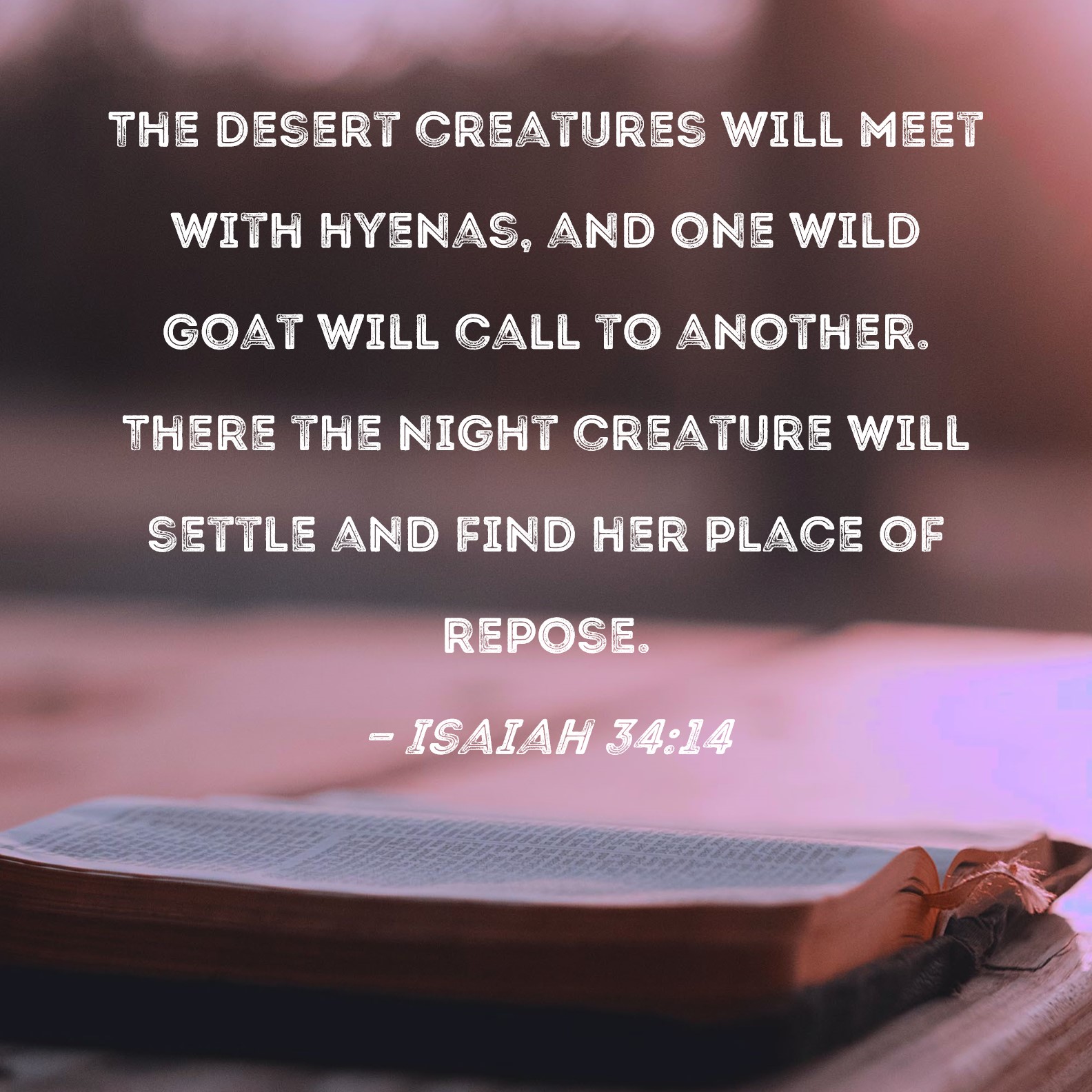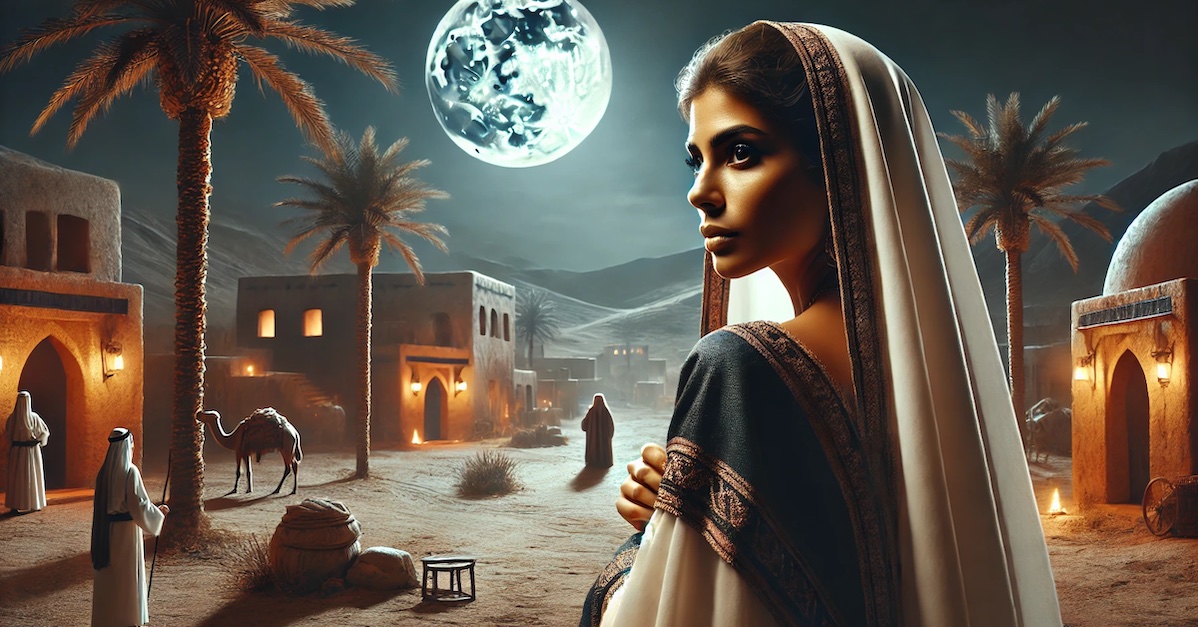ToxicFemininitySucks
Star
- Joined
- Jun 26, 2022
- Messages
- 2,264
Do you mean the lilith who supposedly was Adam's rebellious first wife?It has to do with Lilith, they worship her. Lilith represents the divine feminine.
Is she an archetype, or a being?
Do you mean the lilith who supposedly was Adam's rebellious first wife?It has to do with Lilith, they worship her. Lilith represents the divine feminine.
Yes, Adam's first wife, and she is both an archetype and a being.Do you mean the lilith who supposedly was Adam's rebellious first wife?
Is she an archetype, or a being?
Some more excerpts.All quotes from when god was a woman, by merlin stone
This is really interesting and you make alot of good points! It's true how confusing it can be because we don't really fully understand why the elites do what they do, cause it seems there are many things they are doing at once. that's a very good point to make about fluctuating between what they really want, because we see so many of these points being displayed all the time. So many would think it's confusing, and it makes me wonder why the elites are doing this, especially if they actually are purposely trying to confuse people so they don't know what to think and where to go. It's nuts to see these things actually being portrayed in real life so often, now.If i had to guess i would say it is a combination of several factors
- the transphobia accusation thing for sure. In fact, the reason i even found out about that woman who wanted to reduce the population of men to 10% was that a man pretending to be a woman was upset and mentioned her and i looked her up.
. A critical mass of men have decided they are trans, but back then in the 70s it was much more rare. Perhaps back then it was easier to criticize the possibility, while now they are everywhere.
- the rise of the whole nonbinary and fluid "identities". The radicalization of gender theory that there is no such thing as gender.
I fluctuate between thinking that the elites' goals are a feminized (but warriorlike/"amazon") society where men are stripped of power and women replace men OR a society in which gender is erased and everyone is some kind of androgynous or both sexes at once.
I truly don't know if the elites prefer one option over the other. Depopulation is a factor, of course, but i think the spiritual reasons are also a huge motivating factor. Are they trying to recreate the ancient pagan matriarchal religions, but this time with technological measures in place to ensure they won't be overthrown?
Another thing i dont know: how this all ties in with the end times.
BTW not my words......was taken from bard ai..This is true, this thing goes by many names
Yeah, and the plot twist is that the worship continued, despite feminists screeching about the "patriatchy". Just that the worship went undergroung. Now the elites are pushing to bring it to the forefront again.
Yeah, like all those pictures and statues that are supposedly Jesus and Mary.
Screw that.
I'll take the real God.

Do you mean the lilith who supposedly was Adam's rebellious first wife?
Also is Babalon in Thelema, which has outright stated that Lilith, Inanna, Isis, and Babalon are the same.
In the book of Isaiah the word "lilit" appears in the untranslated Hebrewa connection between inanna/ishtar and the whore of Revelation

The translated whole passage gives us some context. It is translated as "screech owl" here.The word here used, lilith, occurs only in this place. It may be doubted whether any bird, or other animal, is meant. Lilit was the name of a female demon, or wicked fairy, in whom the Assyrians believed - a being thought to vex and persecute her victims in their sleep.
The word is probably a derivative from leilah, night, and designates" the spirit of the night" - a mischievous being, who took advantage of the darkness to play fantastic tricks. A Jewish legend made Lilith the first wife of Adam, and said that, having pronounced the Divine Name as a charm, she was changed into a devil. It was her special delight to murder young children

I. The Heb term lîlît as a →demon in Isa 34:14 is connected by popular etymology with the word laylâ ‘night’. But it is certainly to be considered a loan from Akk lilı̄tu, which is ultimately derived from Sum líl. II. The Mesopotamian evidence for this demon reaches back to the 3rd millennium BCE as we can see from the Sumerian epic ‘Gilgamesh, Enkidu and the Netherworld’. Here we find Inanna (→Ishtar) who plants a tree later hoping to cut from its wood a throne and a bed for herself. But as the tree grows, a snake makes its nest at its roots, Anzu settled in the top and in the trunk the demon ki-sikil-líl-lá makes her lair. Gilgamesh has to slay the snake. Anzu and the demon flee so that he can cut down the tree and give the timber to Inanna.
From the term líl we can see that these demons are related to stormy winds. In Akk texts lilû, lilı̄tu and (w)ardat lilî often occur together as three closely related demons whose dominion are the stormy winds. Thus lilû can also be seen as the southwest wind, lilı̄tu can flee from a house through the window like the wind or people imagine that she is able to fly like a bird.
Of greater importance, however, is the sexual aspect of the—mainly—female demons lilı̄tu and (w)ardat lilî. Thus the texts refer to them as the ones who have no husband, or as the ones who stroll about searching for men in order to ensnare them or to enter the house of a man through the window (see the references given by FAUTH 1982:60–61; LACKENBACHER 1971; HUTTER 1988:224–226). But their sexuality is not a normal kind of sexuality because (w)ardat lilî is a girl with whom a man does not sleep in the same way as with his wife, as the texts tell us. In this aspect we can compare these demons with Ishtar who stands at the window looking for a man in order to seduce him, love him and kill him.
The fact that Lilith’s sexuality is not a regular kind of sexuality is also illustrated by references which show that she cannot bear children and that she has no milk but only poison when she gives her breast as a deceitful wet-nurse to the baby. In all these aspects Lilith has a character similar to that of Lamashtu. Thus, since the Middle Babylonian period Lilith and Lamashtu have been assimilated to each other. This also led to the spreading of Lilith from the Mesopotamian to the Syrian area.
The traditional reading of Arslan Tash amulet I (ANET 658) suggests that she was revered in Phoenicia. A reconsideration of the original, however, forces a reading ll wym ‘night and day’ instead of lly[… ‘Lili[th … (BUTTERWECK TUAT II/3:437). Aramaic magical texts and the scriptures of the Mandaeans in southern Mesopotamia have clear allusions to the demon (FAUTH 1986). In conclusion we can say that the female demon—lilı̄tu, (w)ardat lilî)—can be considered a young girl who has not reached maturity and thus has to stroll about ceaselessly in search of a male companion. Sexually unfulfilled, she is the perpetual seductress of men.
III. The only reference to this demon in the OT occurs in Isa 34:14. The whole chapter describes the prophetic judgement on →Edom which will become waste land. Then all kinds of demons will dwell there: among them hyenas, tawny owls, vultures and also Lilith. The different versions and ancient translations of the OT are of some interest in this case as we can see how they interpreted ‘Lilith’. The LXX gives the translation ὀνοκένταυρος (cf. also LXX Isa 13:22; 34:11), Aquila’s version has the transliteration Λιλιθ, while Symmachos’ version gives the name of the Greek demon Λαμία, which corresponds to Jerome’s Vulgate (also Lamia).
In his commentary Jerome says: “Lamia, who is called Lilith in Hebrew. (…) And some of the Hebrews believe her to be an Ἔριννυς, i.e. fury”. Still, these translations and interpretations of Lilith show her ancient connection to Lamashtu. The onokentauros of the LXX reminds us of those amulets where Lamashtu is standing upon a donkey. The Greek name Lamia might ultimately derive from Akkadian Lamashtu. Although Isa 34 contains the only biblical reference to Lilith, she occurs fairly often in Jewish and Christian scriptures (KREBS 1975; BRIL 1984).
In the Talmud she is a demon with long hair and wings (Erub. 100b; Nid. 24b), and Shab. 151b warns all men not to sleep alone in a house lest Lilith will overcome them. B. Bat. 73a makes her the daughter of Ahreman, the opponent of Ohrmizd in the Zoroastrian religion. Well known is also the legend of Lilith who was →Adam’s first wife but flew away from him after a quarrel; since then she has been a danger to little children and people have to protect themselves against her by means of amulets.
Hutter, M. (1999). Lilith. In K. van der Toorn, B. Becking, & P. W. van der Horst (Eds.), Dictionary of deities and demons in the Bible (2nd extensively rev. ed., pp. 520–521). Leiden; Boston; Köln; Grand Rapids, MI; Cambridge: Brill; Eerdmans.Solomon in his great wisdom also possessed might over demons and the Liliths; in later Jewish legends one of the two wives from 1 Kgs 3:16–28 was identified with Lilith; so was the Queen of Sheba (1 Kgs 10). Such legends spread until the Middle Ages. In popular belief Lilith became not only the grandmother of the →devil or the devil himself, but also the arch-mother of witchcraft and witches.

While obviously the ritual murdering of young men bothers me, i find this mother-son incest stuff to be absolutely disgusting. When reading when God was a woman i just can't believe that the feminist author is so nonchalant about it, like no big deal that these societies were worshipping an incestuous "goddess" and reenacting it with their human leader purposely choosing a much younger man representing her son (more like a series of much younger men) to fornicate with and discard.the theme of an older female paired up with a (series of) young man (men), a form of symbollic mother-son incest,
Regarding kali...

